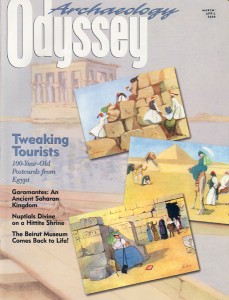Glossary
Sidebar to: Salt from the Garamantes
Wadi
A dry riverbed that may fill with water during the rainy season. Because wadis sometimes provide a seasonal supply of water, they are frequently the sites of towns and villages in arid regions.
Sounding
A practice that precedes a formal excavation. Archaeologists peer beneath the surface—by sinking a probe, digging a shaft or using ground-penetrating radar or sonar—in order to determine the locations of buried structures, streets or artifacts.
Graffito
An informal written inscription in stone (the singular of “graffiti”).
Radiocarbon Dating
A method of dating by determining the amount of the unstable isotope carbon 14 in organic material. When plants or animals stop living, half of the carbon 14 they contain breaks down every 5,730 years. By counting the carbon 14 that remains in a specimen, scientists can date it (along with artifacts found in the same context).
Occupation Level
A stratum, or layer, of remains beneath the ground that indicates a period of habitation.
Amun
The Egyptian god of creation and the chief god in the Egyptian pantheon. An important deity, Amun was appropriated by other peoples (the Greeks, and specifically Alexander the Great, equated Amun with Zeus); he was worshiped by several cultures throughout northern Africa.
Mastaba
From an Arabic word meaning “bench,” a mastaba is a flat-topped tomb with sloping walls (so that the roof area is smaller than that of the base). Mastaba tombs were used for royal burials during Egypy’s Early Dynastic period (c. 3100–2686 B.C.), but not afterwards.
Already a library member? Log in here.
Institution user? Log in with your IP address.

